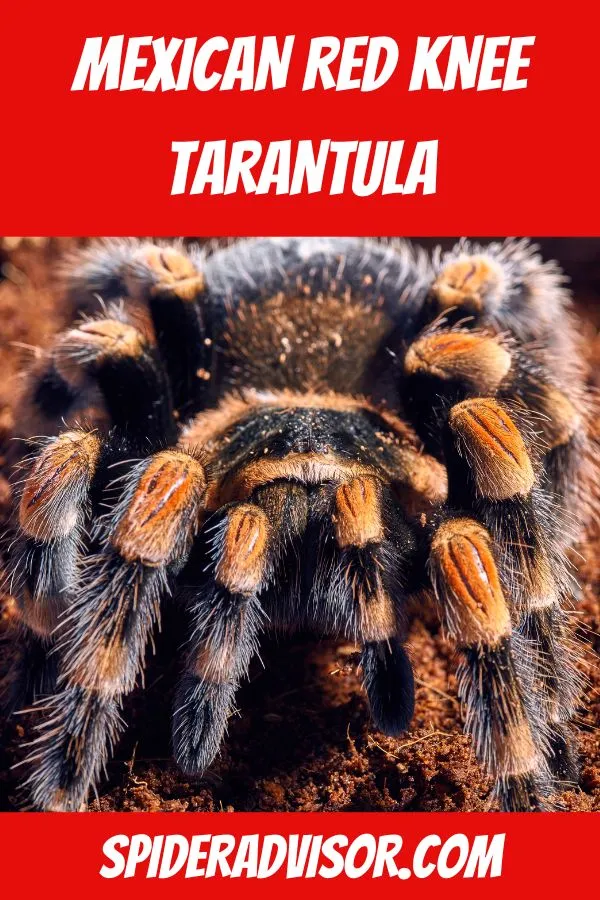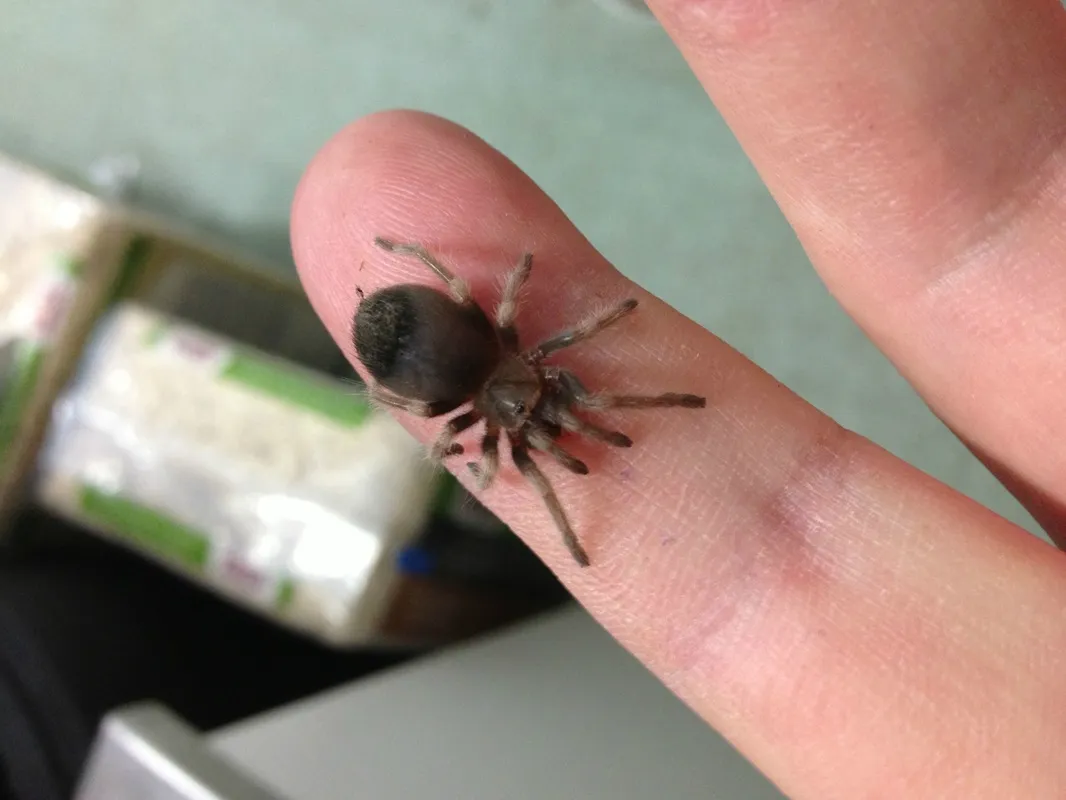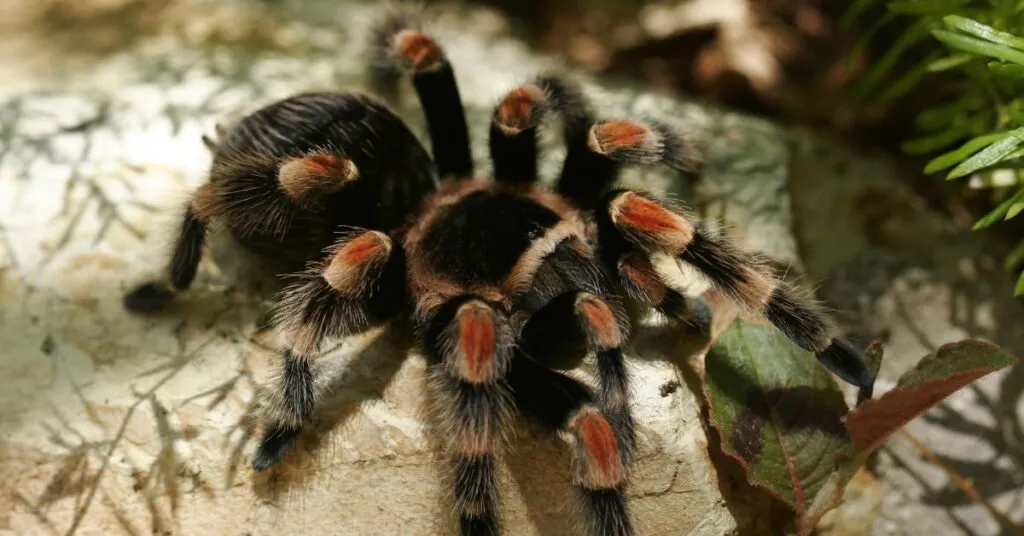What is a Black Mexican Red Knee Tarantula?
The Black Mexican Red Knee Tarantula, scientifically known as Brachypelma hamorii, is one of the most popular tarantula species kept as pets. Its striking appearance and relatively docile temperament make it a favorite among both novice and experienced arachnid enthusiasts. Native to the arid scrublands and tropical deciduous forests of the Pacific coast of Mexico, this species is renowned for its vibrant coloration, featuring black legs with distinctive red or orange markings on the ‘knees’ (actually the patellae, or leg segments), and a velvety black body. They are relatively long-lived, adding to their appeal as pets. Understanding this tarantula involves appreciating its unique characteristics and needs.
Origin and Habitat of the Black Mexican Red Knee Tarantula
Where do They Come From?

These tarantulas are endemic to the western coast of Mexico. Their natural habitat spans from the states of Colima and Michoacán to Guerrero. They are primarily found in areas characterized by scrubland, grasslands, and the edges of tropical deciduous forests. Their geographic distribution is crucial to understanding their environmental needs in captivity. They are well-adapted to the conditions of these regions.
What is Their Ideal Habitat?
In their natural environment, Black Mexican Red Knee Tarantulas are terrestrial spiders, meaning they live on the ground. They construct burrows, often utilizing existing crevices or digging their own shelters in the substrate. Their ideal habitat consists of well-drained soil, with access to cover such as rocks, logs, or dense vegetation. The climate in these areas is generally dry with distinct wet and dry seasons. This habitat preference directly influences the setup required for these spiders in captivity, including the need for a suitable substrate and hiding places.
Appearance and Characteristics
Size and Physical Features

Black Mexican Red Knee Tarantulas are medium to large-sized spiders. Females typically reach a leg span of up to 6 inches (15 cm), while males are generally smaller. The body, including the cephalothorax (head and thorax) and abdomen, is covered in setae (small hairs), giving them a velvety appearance. Their strong legs are built for both walking and digging. These physical characteristics contribute to their survival in their natural habitat, enabling them to effectively hunt and navigate their environment.
Coloration and Markings
The most distinguishing feature of the Black Mexican Red Knee Tarantula is its coloration. The body is typically a deep velvety black, contrasting sharply with the vibrant red or orange markings on their patellae (the ‘knees’ of their legs). The abdomen may have reddish hairs. This striking coloration serves as a warning to potential predators, although, for the most part, they’re harmless to humans. The pattern and intensity of the red markings can vary slightly between individuals, but the overall appearance is consistent.
Lifespan of the Black Mexican Red Knee Tarantula
How Long Do They Live?

One of the appealing aspects of owning a Black Mexican Red Knee Tarantula is their longevity. Females can live for an impressive 20 to 30 years or even longer in ideal conditions. Males, on the other hand, have a significantly shorter lifespan, typically living for only 5 to 10 years. This difference in lifespan is a common characteristic among many tarantula species, with the females outliving the males. This makes the females a long term commitment.
Factors Affecting Lifespan
Several factors can impact the lifespan of a Black Mexican Red Knee Tarantula. Proper care, including appropriate temperature, humidity, and diet, is paramount. Stress and poor living conditions can reduce lifespan. Regular access to clean water and a suitable environment are essential. The tarantula’s genetics and overall health at the time of purchase or birth also play a role. Providing optimal care ensures your pet lives as long as possible.
Behavior and Temperament
Typical Behavior

Black Mexican Red Knee Tarantulas are generally known for their docile temperament, making them relatively easy to handle compared to some other tarantula species. They are typically slow-moving and are less prone to biting or defensive behavior. However, they can flick urticating hairs (small irritating hairs on their abdomen) as a defense mechanism if they feel threatened. They often spend a lot of time hiding in their burrows or under cover, especially during the day, coming out to hunt primarily at night. Observing their behavior can be an interesting aspect of keeping them as pets.
Handling and Interaction
While Black Mexican Red Knee Tarantulas are generally manageable, handling should be done with caution and respect for the spider. Handling should be kept to a minimum to avoid stressing the tarantula. If you do handle them, do so close to the ground or a soft surface in case the tarantula falls. Avoid sudden movements, and always be aware of the spider’s posture, which may indicate its mood. Gentle handling can be rewarding, allowing for a closer look at these fascinating creatures. Always wash your hands before and after handling.
Diet and Feeding Habits
What Do They Eat?

In the wild and in captivity, Black Mexican Red Knee Tarantulas are primarily insectivores. Their diet consists mainly of insects. Crickets, mealworms, and roaches are common choices for captive tarantulas. These spiders have powerful chelicerae (mouthparts) to grasp and inject venom to subdue their prey. Juvenile tarantulas require smaller insects, while adults can consume larger prey items. Variety in their diet can contribute to their overall health and well-being.
Feeding Frequency
The feeding frequency for Black Mexican Red Knee Tarantulas depends on their age and size. Spiderlings and juveniles should be fed more frequently, typically every 2 to 3 days. Adults can be fed less often, perhaps once or twice a week. It’s important not to overfeed them, as this can lead to health problems. Always remove any uneaten prey items within 24 hours to prevent stress to the spider. Observing their feeding habits can help you understand their needs and ensure they are healthy and well-nourished.
How to Care for a Black Mexican Red Knee Tarantula
Housing Requirements

Providing the correct housing is essential for the health and well-being of your Black Mexican Red Knee Tarantula. A secure enclosure is a must, such as a glass terrarium or a plastic container with a secure lid. The size of the enclosure should be appropriate for the size of the spider. As a general guide, the enclosure should be at least three times the tarantula’s leg span in width and length. The substrate should be at least 4-6 inches deep to allow for burrowing. Ventilation is also critical, so make sure the enclosure has cross-ventilation to prevent the buildup of humidity and the growth of mold.
Humidity and Temperature
Maintaining the correct humidity and temperature levels is vital. Black Mexican Red Knee Tarantulas thrive in a temperature range of 75-85°F (24-29°C). A heat mat on the side of the enclosure can provide a gentle heat source. Humidity levels should be kept at around 60-70%. Misting the enclosure lightly once or twice a week, or providing a water dish, can help maintain the correct humidity. Using a hygrometer and thermometer to monitor these levels will help you create the ideal environment for your tarantula.
Health and Common Issues
Preventative Measures
Preventing health issues involves several key practices. Maintaining a clean enclosure is paramount. Regular substrate changes help prevent the buildup of waste and mold. Ensure the enclosure has proper ventilation to avoid humidity problems. Feeding a balanced diet of appropriate-sized insects and providing fresh water are also important. Quarantine new tarantulas before introducing them to your existing collection to prevent the spread of potential illnesses. Careful observation and prompt action are key to ensuring your tarantula’s health.
Recognizing Illness
Knowing how to recognize signs of illness is crucial for providing timely care. Some common signs include lethargy, loss of appetite, unusual posture, or difficulty moving. Look for any changes in the tarantula’s behavior or appearance, such as a dull abdomen or a lack of response to stimuli. If you suspect your tarantula is unwell, consult a veterinarian experienced with exotic animals or a knowledgeable tarantula breeder. Early detection and intervention are critical for successful treatment.
